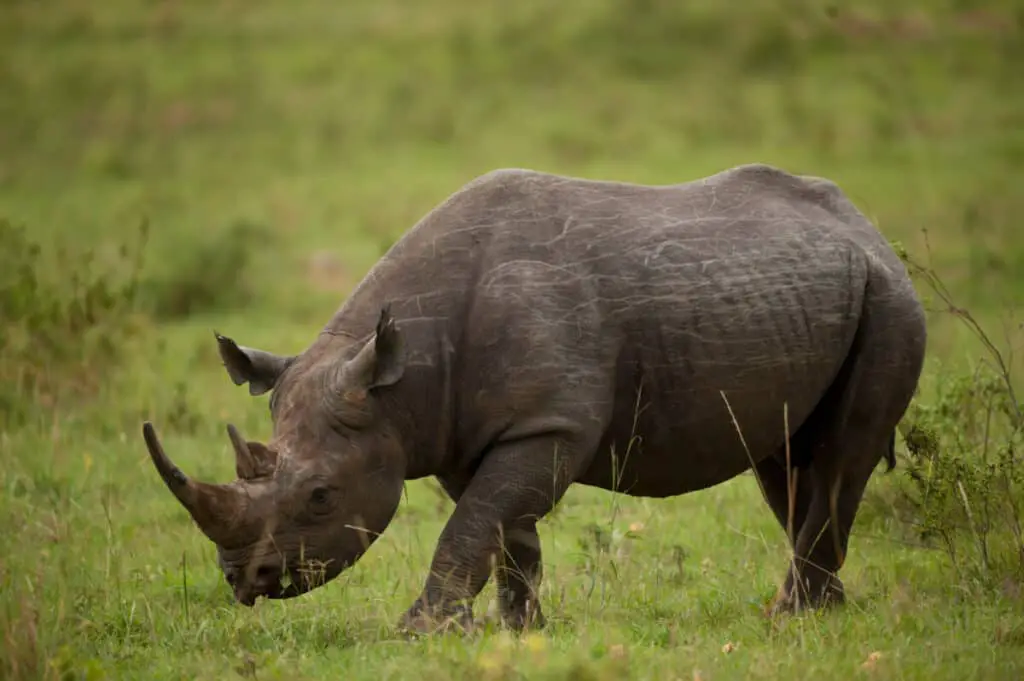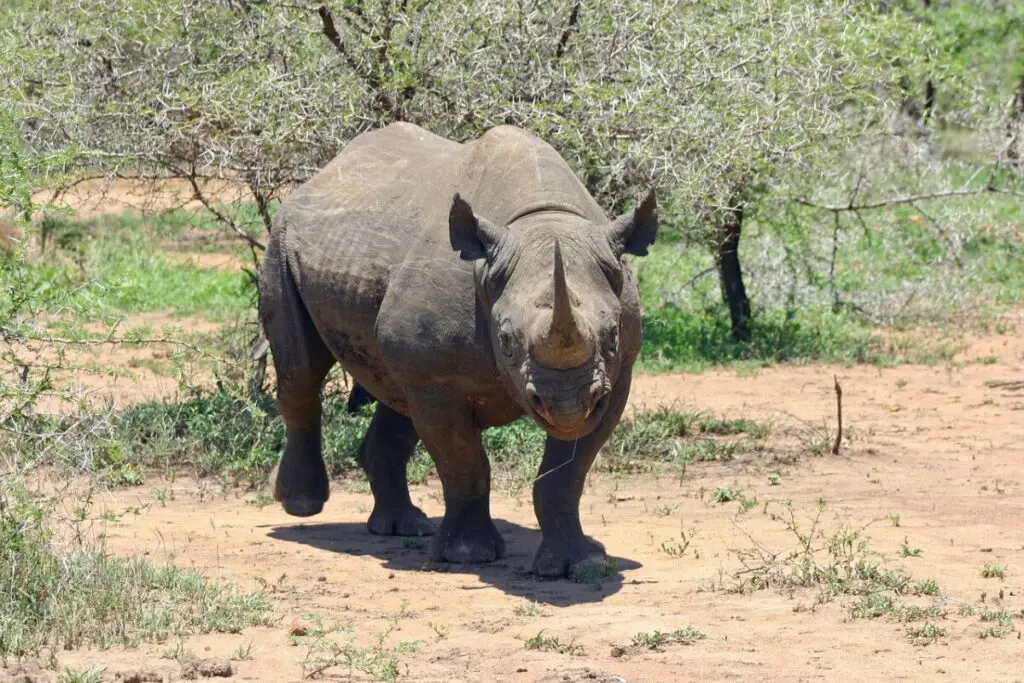Black Rhinoceroses are one of the most endangered species in the world, with less than 5,000 individuals remaining in the wild. These large and powerful animals have few natural predators due to their size and strength, but they still face threats from human activities such as poaching and habitat destruction.
Despite their formidable appearance, black rhinos can fall prey to a variety of predators. While lions are known to occasionally hunt young or weak individuals, other carnivores such as hyenas, crocodiles, and leopards may also pose a threat.
In addition to these natural predators, humans continue to be the biggest threat to black rhinos through illegal hunting for their horns which are highly prized in traditional medicine markets around the world. Understanding the different factors that contribute to the decline of this iconic species is crucial for conservation efforts aimed at preserving its future survival in an increasingly uncertain global landscape.

Threats To The Black Rhinoceros Population
The black rhinoceros is a critically endangered species primarily due to human encroachment and habitat loss. As human populations continue to grow, the demand for land increases, leading to deforestation and degradation of natural habitats. This has resulted in a significant decline in the number of black rhinos over the last few decades.
Moreover, poaching remains one of the most significant threats to black rhino survival. Rhino horns are highly valued in traditional medicine practices in some Asian countries, driving up their prices on the black market. Despite conservation efforts, illegal hunting continues to pose a severe threat to this species’ population.
In addition, climate change exacerbates these threats by altering weather patterns, reducing food availability and water sources for the animals. Therefore, urgent action must be taken to address these challenges if we are to save this majestic species from extinction.
The Impact Of Human Activities On Black Rhinoceroses
The threats to black rhinoceros population are not only limited to natural predators but also include human impact.
Habitat loss is one of the significant challenges that these animals face, leading to a decline in their numbers. Human activities such as deforestation and urbanization have resulted in the destruction and fragmentation of habitats critical for rhino survival.
Apart from habitat loss, humans also pose a direct threat to black rhinos through hunting poaching. The demand for rhino horns has led to an increase in illegal poaching, killing thousands of black rhinos annually.
As a result, conservation efforts have been put in place globally to protect this endangered species. However, without addressing human activities’ root causes that lead to habitat degradation and poaching, these efforts may be insufficient in saving the remaining populations of black rhinoceroses.
Natural Predators Of Black Rhinoceroses
Black rhinoceroses are apex predators in their habitats and have no natural predators. With their massive size, thick skin, and sharp horns, they can easily fend off any potential threats from other animals.
However, the main threat to black rhinoceros populations is human activity rather than predation. Habitat loss due to deforestation and agricultural expansion has greatly contributed to the decline in black rhinoceros populations. Human activities such as poaching for their valuable horns also pose a significant threat to these endangered species.
Despite conservation efforts, the population of black rhinoceroses continues to decrease rapidly. It remains crucial for humans to address these issues if we want future generations to witness the magnificence of these powerful creatures in their natural habitat.
The Role Of Poaching In The Decline Of Black Rhinoceroses
Poaching has been a significant contributor to the decline in black rhinoceros populations. Rhino horn is highly valued in some cultures for its supposed medicinal properties and as a status symbol, leading to an illegal trade market with high demand.
This poaching epidemic has not only caused population declines but also resulted in increased levels of stress within the remaining individuals due to constant threats from poachers.
To combat poaching, various preventative measures have been implemented, such as increasing patrols and monitoring efforts in areas where rhinos are known to reside. In addition, there has been an emphasis on reducing consumer demand by raising awareness about the negative impacts of poaching and promoting alternative resources for traditional medicine practices.
Furthermore, successful breeding programs established in protected reserves have shown promising outcomes in repopulating certain areas with black rhinoceroses.
Although progress has been made towards mitigating the effects of poaching on black rhinoceros populations, continued efforts are necessary to ensure their survival. The implementation of effective anti-poaching strategies coupled with sustainable conservation initiatives offers hope for preserving these magnificent creatures for future generations to enjoy and appreciate.
Sumatran Rhinoceros’s Predators Revealed: Unmasking the Threats

Conservation Efforts To Protect Black Rhinoceroses
It is evident that black rhinoceroses face many challenges in their natural habitat, including predation by various animals. However, humans have also played a significant role in the decline of this species due to poaching and habitat destruction.
In response to these issues, conservation efforts are being made around the world to protect black rhinoceroses. One important aspect of conservation involves community involvement. Many organizations work with local communities to educate them about the importance of protecting wildlife and their habitats. This approach helps build support for conservation efforts from those who live near or rely on the same resources as black rhinoceroses.
Additionally, ecotourism has been used as a way to provide economic benefits for local communities while also promoting sustainable practices and raising awareness about endangered species like black rhinoceroses. By involving people living near these animals, we can create long-term solutions that benefit both humans and wildlife.
Overall, it is clear that much more needs to be done to ensure the survival of black rhinoceroses. However, through community involvement and ecotourism initiatives, there is hope for this magnificent animal’s continued existence. It will take ongoing commitment and dedication from individuals across all sectors–from governments and NGOs to everyday citizens—to help preserve one of Africa’s most iconic species for generations to come.
Conclusion
The black rhinoceros is an endangered species that faces various threats.
Human activities such as habitat destruction and poaching have contributed to their decline, but natural predators also play a role in their population numbers.
Despite the challenges facing black rhinoceros populations, conservation efforts are being made to protect these animals from extinction.
Strategies include anti-poaching measures, habitat restoration, and captive breeding programs that aim to increase the number of individuals in the wild.
The future of this magnificent animal depends on continued conservation efforts by humans who recognize its importance for our planet’s biodiversity.

